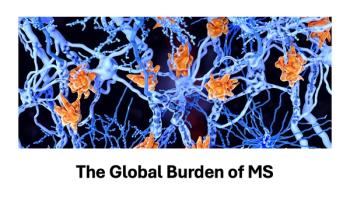
Acid-suppressive medications associated with increased risk of hospital-acquired pneumonia
A prospective pharmacoepidemiologic cohort study published in JAMA demonstrated that hospitalized patients treated with acid-suppressive medications were 30% more likely to develop hospital-acquired pneumonia than those who were not treated with acid-suppressive medications.
A prospective pharmacoepidemiologic cohort study published in JAMA demonstrated that hospitalized patients treated with acid-suppressive medications were 30% more likely to develop hospital-acquired pneumonia than those who were not treated with acid-suppressive medications. This increased risk was statistically significant for patients treated with proton-pump inhibitors (PPIs) but not for those treated with histamine2-receptor antagonists.
In this prospective study, patients admitted to a large, urban, academic medical center in Boston between January 1, 2004, and December 31, 2007, were assessed for inclusion eligibility. Patients aged at least 18 years and hospitalized for at least 3 days were eligible for this study; those who spent any time in the intensive care unit (ICU) were excluded to restrict the analysis to the nonventilated general patient population. Data were collected from electronic databases maintained at the medical center. Acid-suppressive medication exposure was defined as a pharmacy order for a PPI or a histamine2-receptor antagonist during hospital stay. The primary outcome was the incidence of hospital-acquired pneumonia as defined by the International Classification of Diseases, Ninth Revision, Clinical Modification (ICD-9-CM) codes for bacterial pneumonia, listed as a secondary discharge diagnosis.
A total of 63,878 admissions were included in the final cohort. Acid-suppressive medication was ordered in 32,922 admissions (52%); 27,236 (83%) of these orders were for PPIs, and 7,548 (23%) were for histamine2-receptor antagonists (some patients were exposed to both). Hospital-acquired pneumonia occurred in 2,219 admissions (3.5%). Multivariable logistic regression demonstrated that patients treated with acid-suppressive medications had an OR of 1.3 (95% CI, 1.1–1.4) for the development of hospital-acquired pneumonia. Subgroup analysis demonstrated that this increased risk of hospital-acquired pneumonia was significant among patients treated with PPIs (adjusted OR=1.3; 95% CI, 1.1–1.4) but not among those treated with histamine2-receptor antagonists (adjusted OR=1.2; 95% CI, 0.98–1.4).
The authors discussed several limitations of their study, including lack of information on the temporal association between administration of acid-suppressive medication and date of pneumonia diagnosis. Additionally, unmeasured confounders may have skewed the study results. They suggested that a randomized, controlled trial would be useful to study the potential relationship between acid-suppressive medications and hospital-acquired pneumonia, but they pointed out that a well-powered trial “would require a prohibitively large sample size.” They concluded that, although further study is necessary, their results “occur in the context of an increasing body of literature suggesting an association between acid-suppressive medication and pneumonia.”
Source
Herzig SJ, Howell MD, Ngo LH, Marcantonio ER. Acid-suppressive medication use and the risk for hospital-acquired pneumonia. JAMA. 2009;301:2120–2128.
Newsletter
Get the latest industry news, event updates, and more from Managed healthcare Executive.






















































